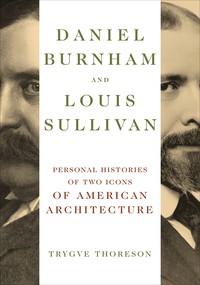
The Architecture of Barry Byrne
About the Book
One of the first significant apprentices of Frank Lloyd Wright, Barry Byrne (1883–1967) was a radical architect who sought basic principles as fervently as his mentor Wright and his inspiration Louis Sullivan. From these roots he developed a design philosophy that began with the function of the building. He followed Wright's principles but forged an individual style more reminiscent of Sullivan and Irving Gill, with taut planar skins enveloping modern space plans. In 1922 he designed the first modern Catholic church building, St. Thomas the Apostle in Chicago, and in 1924 he traveled to Europe where he met Mies, Mendelsohn, Oud, and other modernist architects. He was the only Prairie School architect to build in Europe, designing the concrete Church of Christ the King, built in 1928–31 in Cork, Ireland.In this book, architectural historian Vincent L. Michael charts the entire length of Byrne's work, highlighting its distinctive features while discussing the cultural conditions that kept Byrne in the shadows of his more famous contemporaries. Byrne lacked the architectural ego of his mentor Wright and believed true architecture was intrinsically humble, concentrating for much of his career on Catholic churches and schools throughout North America, many of them now considered landmarks. A dedicated modernist who rejected historical mannerisms and celebrated contemporary materials and processes, he was also a devoted Catholic, progressively participating in the liturgical reform movement from the 1920s until his death. In his practice his modernism and Catholicism came together, revolutionizing the ground plans of Catholic churches in anticipation of the reforms of Vatican II forty years later.
Creative, vibrant, and relentlessly intellectual, Barry Byrne was, like all great artists, a collection of contradictions. Illustrated by more than one hundred photographs and drawings, this biography explores the interplay of influences and impulses--individualism and communalism, modernism and tradition, pragmatism and faith--enduring throughout Byrne's life and work.
* Supported by Graham Foundation for Advanced Studies in the Fine Arts.
About the Author
Vincent L. Michael is Executive Director of the Global Heritage Fund in Palo Alto, California, the John H. Bryan Chair of Historic Preservation at the School of the Art Institute of Chicago, and a Trustee of the National Trust for Historic Preservation.Reviews
“Highly recommended to readers and scholars interested in modern architecture, Catholic church architecture, or the architecture of Wright and his Chicago buildings.”—Library Journal"Vincent L. Michael helps to restore Byrne to his rightful place as an important American architect who in many ways battled against the dominant trends of his time--both the traditionalists who resurrected past styles and also the European-based abstract modernism that became the dominant trend in the mid-twentieth century. An extremely valuable, well researched and written book that opens new doors into the architecture of the Midwest."--Journal of Illinois History
"Michael's discussion of Byrne's work and life is rich with insight into the significance of the twentieth century Midwest. . . . While Michael's goal with this book was clearly to place Byrne within the larger story of modern architecture, we might just as easily use Byrne to place the Midwest within the larger story of the twentieth century."--Middle West Review
Blurbs
"A very exciting topic and a study that is long overdue. Michael puts Barry Byrne's modernist perspective into the context of Catholic doctrine and Catholic architecture in a way that is illuminating and convincing."--Paul Kruty, author of Frank Lloyd Wright and Midway Gardens
"Vincent Michael effectively promotes awareness of the innovative architecture of Barry Byrne, a prominent and important designer of modernist Catholic churches. This volume will be welcomed by readers interested in modern architecture and design, religious architecture, Catholic history, Chicago architecture, or Frank Lloyd Wright."--Dale Allen Gyure, author of The Chicago Schoolhouse: High School Architecture and Educational Reform, 1856-2006



